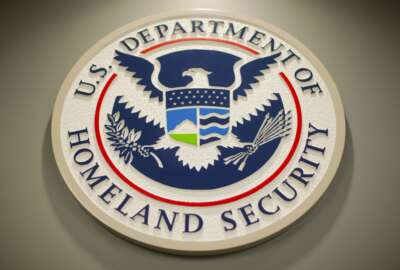Seven steps to surviving the next great migration
Commentary: Jose Carlos Linares, the CEO of Open Technology Group, outlines how agencies should begin preparing today for the next Windows operating system...
By Jose Carlos Linares
CEO, Open Technology Group
Believe it or not, it’s time for government IT managers to start planning ahead for the next Microsoft Windows migration. Even though most agencies successfully made the transition to Windows 7 nearly a year ago, mainstream support recently ended in January, and extended support for Windows Server 2003 is scheduled to end in July. Yes, you read that right — the end is near again.
Even though Microsoft will continue to provide security patches for Windows 7 until January 2020, agencies need to consider several factors as they begin the migration planning process. 
Migration can be a slow and complex process for agencies that don’t embrace the operating system lifecycle. For IT managers who choose to build a migration culture within their agency, the transition process can be much smoother. Whether they decide to migrate the operating system or refresh their computers on a continuous basis (some estimate, for example, that 33 percent of the organizations update their PCs every year) or plan an agencywide operating system upgrade or PC refresh all at the same time, all IT managers must plan for and overcome the greatest challenge in a migration — application compatibility.
By following these seven steps, IT managers can overcome application compatibility issues and ensure a smooth and successful operating system migration:
Step 1: Discover
Discovery is the key to understanding complex IT environments. IT managers need to start by collecting a comprehensive list of all the applications deployed within their agency, which typically includes far more applications than an end user survey would suggest. There are many application discovery tools on the market that can automate the process of performing a comprehensive inventory.
Step 2: Rationalize
Chances are the comprehensive list of applications will include a plethora of applications and outdated versions that no longer provide business value. IT managers need to execute an application rationalization, deciding whether each application in the portfolio should be retired, replaced, consolidated or modernized. IT Managers should never make assumptions about which applications are vital. Rather, they should closely collaborate with stakeholders throughout the organization to determine which applications are truly necessary and need to be moved to the next operating system. By eliminating redundant and non-value-adding applications from the list of applications that require analysis and testing, rationalization shortens the overall migration timeline.
Step 3: Analyze
IT managers should thoroughly analyze their rationalized list of applications and understand various vendor support policies. Many third-party applications are certified by the vendor to run “as is” on the next operating system, and others will have a certified compatible version available. Applications that are not supported by the vendor will require further analysis and testing before migration to a new operating system is an option.
Step 4: Test
There are a variety of tools available that test for operating system compatibility by testing applications against thousands of rule sets. Many testing tools automate the process of assigning applications a green, amber or red status that indicates compatibility or severity of compatibility issues. In addition, IT managers should have a small group of typical users test the applications under ordinary use conditions to verify compatibility.
Step 5: Remediate
Agencies are likely to have compatibility issues with custom, in-house developed applications, and IT managers must determine the best approach to remediating these issues. They may decide to use virtualization technologies to make a legacy application available through a virtualized version of the previous operating system. They might opt to recode an application for native operating system compatibility. Other IT managers will choose to re-engineer incompatible applications as web-based apps, which are inherently more cross-platform compatible. Remediation can be lengthy and complex, but IT managers who approach the challenge with the next migration in mind will enjoy the most success.
Step 6: Build
Before deployment, IT managers should strategically build a single standard computer image and configure it with user settings that are customized for major user groups within the organization. By creating user settings that align to specific job functions, organizations can promote familiarity and might reduce the amount of training necessary for users to adapt to the new operating system.
Step 7: Deploy
At this stage, organizations will be well positioned for a smooth deployment across the enterprise. After final image testing, IT managers can use a variety of automated deployment tools for both on-site and remote locations to efficiently migrate end-users to the new operating system environment. Communicating with users to set and lock-in a scheduled time for the installation of new computers is one of the most important factors in a successful PC refresh. With proper planning and execution, the helpdesk will not be overwhelmed; mission-critical applications will be available; and end-users can resume productivity with minimum downtime.
Even though 2020 seems far away, it will be here before you know it. By understanding the operating system lifecycle and embracing a migration-focused culture, IT managers can follow this seven step strategy to ensure a successful migration, while saving time and money and increasing an agency’s operational efficiency.
Jose Carlos Linares is the CEO of Open Technology Group, a small business that provides information technology services to government clients.
Copyright © 2025 Federal News Network. All rights reserved. This website is not intended for users located within the European Economic Area.





